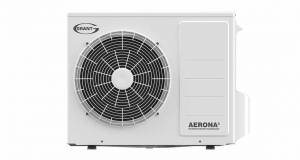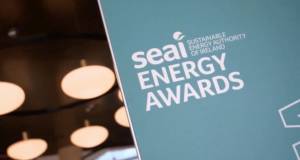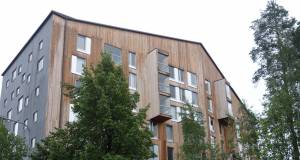- Water
- Posted
Schools finances waterless urinals with pay-as-you-save

One of the mid-west region’s best known primary schools has moved to reduce its annual water and sewer charges by installing waterless urinal systems.
The Model School in Limerick City invested in the systems, installed by BR Waterless Solution, to offset the scale of metered water charges that were introduced for all schools and educational centres in January.
One of the mid-west region’s best known primary schools has moved to
reduce its annual water and sewer charges by installing waterless urinal
systems.
The Model School in Limerick City invested in the systems, installed by BR Waterless Solution, to offset the scale of metered water charges that were introduced for all schools and educational centres in January.
The Sligo-based company says that thousands of schools around the country are unwittingly flushing money down the toilet by using conventional toilets instead of newer waterless urinals.
The savings for the Model School has led BR Waterless Solution to develop the country’s first pay-as-you-save (Pays) programme for national schools interested in using the Waterless No-Flush systems. The company developed the idea after reading about Construct Ireland's proposal for a national pay-as-you-save system to finance building energy upgrades based on the approach developed by Vermont's Energy Efficiency Institute.
According to Ortwin Reintjes of BR Waterless Solution: “The country’s national primary schools have been severely affected by the introduction of metered charges as many are not equipped with urinals for male pupils, necessitating toilet flushes for urination. The absence of installed urinals means that it is very difficult to reduce the level of water usage and the corresponding water and sewer charges.”
Reintjes said that the Model School will benefit from significant savings by its use of the system.
He explained: “The average conventional urinal uses between 50,000 and 150,000 litres of potable water per year. With only two waterless no-flush units installed, the Model School, based on its male pupil population of 250, will benefit from savings on water and wastewater charges of up to €350 per year, based on Limerick City Council water charges of €2.30 per 1000 litres. Outside of the obvious water conservation and commercial benefits for the school, the urinals also lead to increased hygiene as well as a significant reduction of CO2 emissions and maintenances costs.”
Reintjes said that the urinals resemble conventional wall-hung urinal fixtures, but do not require a water supply or flush valve for their proper functioning. Gravity helps the flow into the urinal trap and into the drain line and the urinals can be made of approximately 30 per cent soybean resin.
Commenting on the background to the Pays scheme, he added: “On request, we evaluate how many litres of water per year and how much maintenance can be saved though the use of the waterless no-flush system. The cost of the urinals is paid from part of the savings made on the reduced water charges. Fixtures are usually paid off within two years after which the schools keep on saving on water and sewer charges, along with reduced maintenance costs.”
He concluded: “The world is becoming increasingly aware of the need to conserve water and to diminish waste water. Dwindling natural resources, climate changes, the need to reduce and/or conserve budget money plus behavioral changes have led to an increased awareness and desire to install water conserving fixtures. We intend rolling out the Pays program to other schools throughout the country and look forward to the opportunity to speak with Boards of Management interested in finding out more about the systems and to save money.”
The Model School in Limerick City invested in the systems, installed by BR Waterless Solution, to offset the scale of metered water charges that were introduced for all schools and educational centres in January.
The Sligo-based company says that thousands of schools around the country are unwittingly flushing money down the toilet by using conventional toilets instead of newer waterless urinals.
The savings for the Model School has led BR Waterless Solution to develop the country’s first pay-as-you-save (Pays) programme for national schools interested in using the Waterless No-Flush systems. The company developed the idea after reading about Construct Ireland's proposal for a national pay-as-you-save system to finance building energy upgrades based on the approach developed by Vermont's Energy Efficiency Institute.
According to Ortwin Reintjes of BR Waterless Solution: “The country’s national primary schools have been severely affected by the introduction of metered charges as many are not equipped with urinals for male pupils, necessitating toilet flushes for urination. The absence of installed urinals means that it is very difficult to reduce the level of water usage and the corresponding water and sewer charges.”
Reintjes said that the Model School will benefit from significant savings by its use of the system.
He explained: “The average conventional urinal uses between 50,000 and 150,000 litres of potable water per year. With only two waterless no-flush units installed, the Model School, based on its male pupil population of 250, will benefit from savings on water and wastewater charges of up to €350 per year, based on Limerick City Council water charges of €2.30 per 1000 litres. Outside of the obvious water conservation and commercial benefits for the school, the urinals also lead to increased hygiene as well as a significant reduction of CO2 emissions and maintenances costs.”
Reintjes said that the urinals resemble conventional wall-hung urinal fixtures, but do not require a water supply or flush valve for their proper functioning. Gravity helps the flow into the urinal trap and into the drain line and the urinals can be made of approximately 30 per cent soybean resin.
Commenting on the background to the Pays scheme, he added: “On request, we evaluate how many litres of water per year and how much maintenance can be saved though the use of the waterless no-flush system. The cost of the urinals is paid from part of the savings made on the reduced water charges. Fixtures are usually paid off within two years after which the schools keep on saving on water and sewer charges, along with reduced maintenance costs.”
He concluded: “The world is becoming increasingly aware of the need to conserve water and to diminish waste water. Dwindling natural resources, climate changes, the need to reduce and/or conserve budget money plus behavioral changes have led to an increased awareness and desire to install water conserving fixtures. We intend rolling out the Pays program to other schools throughout the country and look forward to the opportunity to speak with Boards of Management interested in finding out more about the systems and to save money.”
Last modified on Monday, 01 March 2010 11:21







